That breeze you can feel is the collective sigh of relief from everybody at Hyundai Australia now that they finally have a proper three-row large SUV – the Palisade.
Yep, until now the mid-sized Santa Fe with its squishy third row has been the only seven-seater SUV in Hyundai’s range and it’s been competing with the bigger Toyota Kluger, Mazda CX-9 and Nissan Pathfinder, along with rivals its own size.
Not only is the Palisade larger than the Santa Fe, but it has eight seats and a look that should scare anybody that sees it in their rear vision mirror.
We drove the new Palisade hundreds of kilometres at its Australian launch, climbed all over it, and sat in all three rows so that we could bring you this review.
Hyundai Palisade 2021: (8 Seat)
| Engine Type | Diesel Turbo 4, 2.2L |
|---|---|
| Fuel Type | Diesel |
| Fuel Efficiency | 7.3L/100km (combined) |
| Seating | 8 |
| Price From | $39,270 - $46,200 |
| Safety Rating |
|
Does it represent good value for the price? What features does it come with?
8 / 10
The entry-grade Palisade is just called the Palisade. The petrol version lists for $60,000, while the diesel is $4000 more. The top-of-the-range Highlander is $71,000 and again the diesel version is another $4K.

Petrol Palisades are front-wheel drive and the diesel ones are all-wheel drive.
Coming standard on the entry-grade Palisade are leather seats, a 10.25-inch touchscreen media display, 12-speaker stereo, sat nav, Apple CarPlay and Android Auto, three-zone climate control, proximity key, push button start and 19-inch alloy wheels
The Highlander adds 20-inch alloy wheels, dual LED headlights, head-up display, Nappa leather seats, heated and ventilated front and second row seats, dual sunroof, heated steering wheel and a hands-free tailgate.
Is the Palisade good value? Yes, considering the huge haul of features that you’ll receive in return, but it’s pricey compared to rivals such as the CX-9 which starts at under $50,000.

When I pointed this out to a Hyundai senior executive, I was told that a Palisade with a lower entry-price and less features wouldn’t sell that well. I guess they know their customers, but what do you think?
Is there anything interesting about its design?
8 / 10
Excuse my language but, “gosh yes”. Look at the size of that grille, those fang-like LED running lights, that long and broad bonnet, the epic side profile and those vertical tail-lights. It’s a beast, but a refined and prestigious looking one.
The Palisade is big, but not as gigantic as it looks. The dimensions show the Palisade to be 4980mm long, 1975mm wide and 1750mm tall.
The cabin keeps up that posh appearance, too. There’s the high centre console which stands like a wall dividing the driver and front passenger, and the stylish 10.25-inch media display that meets at a point on that compact dashboard which doesn’t intrude much into the cabin space.
The white interior you can see in the Highlander images and video can be swapped for a burgundy leather and black dash combination, while the entry-grade Palisade has black leather and a black dash as standard.

Both grades have leather seats (the Highlander has the plush Nappa leather ones) and the cabins have a high-end feel and look.
It’s interesting that the instrument cluster in the Highlander isn’t fully digital, this would complete that premium look but the feel of the material throughout is excellent.

The Palisade is offered in six mica and metallic paint colours including the standard 'White Cream Mica', and premium 'Timeless Black', 'Steel Graphite', 'Sierra Burgundy' and 'Rain Forest.'
How practical is the space inside?
9 / 10
The entry-grade Palisade and the Highlander both come standard with eight seats – that’s two up front, a bench of three in the second row and another bench of three in the third.
The Highlander can also be optioned with seven seats at no extra cost. Why would you want less seats? Well the bench seat in the second row is replaced by two captain’s chairs, which offer more comfort.

I sat in the second rows of Palisades with both seating configurations, and I think that for a family the eight-seater is definitely the pick because you can use that middle part of the second row bench for books or toys between the kids or as a seat if you need to.
How spacious are the Palisade’s third row seats? Look, nothing is better than a van or people mover for seating seven people but if you can’t bring yourself to own a Hyundai iMax or Kia Carnival as your family car, then the Palisade is a damned good choice.
I’m avoiding the question. Okay, the good news is the third row of the Palisade feels more spacious than any of it rivals and even for me at 191cm (6'3") tall I could sit back there without my knees touching the seat in front.
Making this even more of an amazing feat is that I could then sit in the seat in front without my knees touching the driver’s seat set in my own position.
So, three of me could sit behind each other comfortably. That’s a worst case scenario on many levels, but means legroom is great.
The not so good news is the roof feels low in the third row for me and when I sat upright my head was just touching the ceiling. Luckily, the third row has a recline function which can add a bit more headroom.
Kids will have plenty of room though, unless they’re my height and then it’s probably time they bought their own car.
That middle seat in the third row is almost not a seat it’s so narrow, but when vacant the extra space it gives two window-seat passengers back there is great.
Climbing into the third row of any SUV needs a bit of flexibility, but it doesn’t come much easier than the step into the Palisade’s rear seats.
As for the boot space, with the third row in place there’s 311 litres of cargo capacity and with them folded flat into the floor the luggage room opens up to 704 litres.
Cabin storage is excellent. That floating centre console means the area under it is large enough for a small backpack, there’s also an enormous covered storage box under the middle armrest up front.
Hyundai says there are 16 cupholders on board: I saw four cupholders in the third row, two in the second and another two in the front. I asked where the rest were and was told they counted the doors pockets as well.
Three-zone climate control on both grades is good to see, along with directional vents in all three rows and air conditioning in the third row.
The wireless charger is only standard on the Highlander grade, but all Palisades have seven USB ports: three in the front and two for both second and third rows.
Both grades in the Palisade range also come with the 'Driver Talk' function which pipes the voices in the front seats to the back seats so the kids can hear you say: “If I see you do that again, you’re walking the rest of the way”. Just be careful to turn it off after you’ve made your threats, though.
It’s disappointing the entry-grade Palisade doesn’t come standard with privacy glass or the rear window sunblinds of the Highlander.
What are the key stats for the engine and transmission?
7 / 10
There are two engines in the Palisade line-up: a 3.8-litre V6 petrol engine making 217kW/355Nm and a 2.2-litre four-cylinder diesel producing 147kW/440Nm.
The V6 petrol is only available with front-wheel drive, while the diesel comes exclusively with all-wheel drive.
Both engines have an eight-speed automatic transmission.

The braked towing capacity for all Palisades is 2200kg, but you’d be wise to choose the diesel powered one if you plan to hitch up something bigger than a box trailer.
Only the diesel variant was available to drive at the Australian launch, but I found it to be smooth and torquey, while the Palisade’s insulation did a superb job of keeping the clatter out.
There’d be nothing wrong with engines like this 10 years ago, but we’re almost a quarter of the way through the 21st century so it’s disappointing that there isn’t a hybrid variant or even a high output turbo-petrol four-cylinder engine, as can be found in the Mazda CX-9.
How much fuel does it consume?
7 / 10
Hyundai says that after a combination of open and urban roads the petrol V6 should use 10.7L/100km. That’s thirsty.
Only the diesel variant of the Palisade was available to test. Hyundai says you should get 7.3L/100km. After 161km of mainly motorways and country roads, the trip computer was reporting an average of 7.0L/100km. City and urban driving would see that mileage climb higher.
It’s already been said, but lack of hybrid variant or fuel-efficient turbo four-cylinder petrol is disappointing.
What's it like to drive?
8 / 10
The Palisade didn’t drive as I expected it to. I mean that in a good way. See, as much as I tried to come into this test with a clear mind and no preconceptions, I had my doubts about how well the Palisade would handle, ride and steer. After all, it is a long, tall and wide SUV.
I also knew Hyundai Australia hadn’t carried out any specific Australian tuning to the Palisade’s suspension, as it does for many of its cars, and something it obviously sees as an edge it might have over competitors. Instead the Palisade has a ‘one-size-fits-all’ global suspension tune.
So, the one thing – the driving part – the bit I was expecting the least from, turned out to be the biggest surprise and up there with the Palisade's best attributes.

Not only does the Palisade ride comfortably, but it does so without feeling too ‘floaty’ or ‘bouncy’. Handling is also impressive for something this size and purpose, too.
No, the body control was superb considering the corners, bumps and dips of the country roads I was taking it through.
It was also surprising to find the Palisade’s steering is quite quick and well weighted. Some of those country roads were narrow but the speed limit was 100km/h and I’ve driven them in large SUVs before with vague steering that requires constant adjustments.

But the Palisade’s steering feels natural, accurate and smooth, which is hugely reassuring at that speed in a thing almost as wide as the entire lane.
The Palisade variant I tested was the diesel all-wheel drive Highlander, and while it’s not a performance-focused SUV at all, I didn’t feel as though it was underpowered. Sure, acceleration isn’t mind blowing, but I found it was enough for overtaking easily and moving swiftly if needed.
That 2.2-litre diesel isn’t whisper quiet, but the Palisade’s cabin is so well insulated that unless the engine is really being pushed hard, the noise of it is almost non-existent inside.

Nudging five metres long and two metres wide the Palisade doesn’t feel small, but then it doesn’t feel gigantic like a Nissan Patrol or Toyota LandCruiser are to drive.
Visibility is excellent all around, especially through those large rear side windows. The rear window is also large and offers good vision – unless there are heads in the way.
Warranty & Safety Rating
What safety equipment is fitted? What safety rating?
8 / 10
The Palisade has not been given an ANCAP safety rating. This is because the SUV isn’t sold in most of Europe and hasn’t been tested by Euro NCAP (which ANCAP often collaborates with on local assessments).
So, while I can’t tell you how it would hold up in an impact, I can say it has an excellent armoury of cutting-edge safety equipment.
All Palisades come standard with AEB which can provide full braking from 10-70km/h for pedestrians and cyclists, and larger objects such as cars from 10-80km/h.
There’s also blind spot warning, lane keeping assistance, rear cross traffic collision avoidance (with braking), and adaptive cruise control.
There’s also front and rear parking sensors and a full-sized spare wheel.
For child seats there are five top tether anchor points in the eight-seater and four in the seven-seater. And all Palisades have two ISOFIX points in the second row and one in the third.
There’s also a rear occupant alert to remind you that there could be a little one in the back seat when leaving the car – not that you’d ever need it, right?
I’m also happy to report that the Palisade has airbags which completely cover the third row. Not all seven seat SUVs can boast that, including the Santa Fe and the Kia Sorento.
What does it cost to own? What warranty is offered?
8 / 10
The Hyundai Palisade is covered a five-year/unlimited kilometre warranty. Servicing is recommended every 12 months/15,000km and the pricing is capped.

According to Hyundai the V6 petrol costs $399 per service over five years, while the diesel is $469 for each service for the same period.
Verdict
The Hyundai Palisade impressed with how good it was to drive for something this size, and for the spacious practical cabin, which is outfitted with air vents and USB ports, too. More fuel-efficient powertrains such as a hybrid is what the Palisade could do with though, and while Hyundai wouldn't say if they were coming, I’m sure we’ll see them in the not too distant future. The safety tech, though, is cutting edge and the all covering third row airbags are big wins for this SUV as well. Ownership costs are very reasonable with affordable capped price servicing. The CX-9 and Kluger were the popular benchmarks for the class, but Palisade’s arrival could change this.
The sweet spot of the range is the entry grade diesel Palisade, it's more fuel efficient than the petrol has all-wheel drive and plenty of great features.
Pricing Guides














































.jpg)




















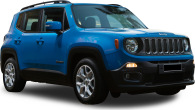
















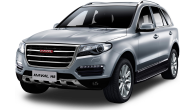



 copy.png)

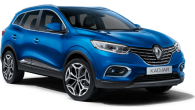
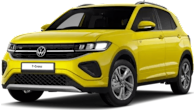










.jpeg)
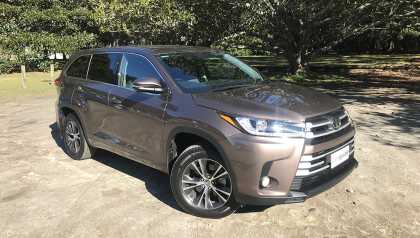



.jpg)
